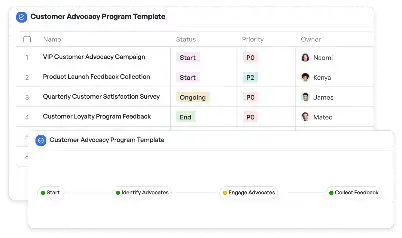Robot Application Containerization Strategy Template
Achieve project success with the Robot Application Containerization Strategy Template today!

What is Robot Application Containerization Strategy Template?
The Robot Application Containerization Strategy Template is a comprehensive guide designed to streamline the process of containerizing robot applications. Containerization is a method of packaging software so it can run consistently across different computing environments. This template is particularly crucial in industries where robots are deployed for tasks such as manufacturing, logistics, and healthcare. By using this template, teams can ensure that their robot applications are portable, scalable, and maintainable. For instance, in a manufacturing plant, robots often need to operate in diverse environments, and containerization ensures that the software controlling these robots performs reliably regardless of the underlying hardware or operating system.
Try this template now
Who is this Robot Application Containerization Strategy Template Template for?
This template is ideal for software engineers, DevOps teams, and project managers working in industries that rely on robotic automation. Typical roles include robotics software developers who need to ensure their applications are deployable across various environments, IT infrastructure teams responsible for setting up and maintaining the containerized environments, and project managers overseeing the deployment of robotic systems. For example, a logistics company deploying autonomous robots for warehouse management would find this template invaluable for ensuring seamless integration and operation of their robotic systems.

Try this template now
Why use this Robot Application Containerization Strategy Template?
The Robot Application Containerization Strategy Template addresses specific challenges such as compatibility issues, deployment inefficiencies, and scalability limitations. For instance, without containerization, a robot application developed for one environment might fail to run in another due to differences in system configurations. This template provides a structured approach to containerization, ensuring that applications are packaged with all their dependencies, making them portable and reliable. Additionally, it simplifies the process of scaling robotic systems, as containerized applications can be easily replicated across multiple robots. This is particularly beneficial in scenarios like a healthcare facility deploying robots for patient care, where consistency and reliability are critical.

Try this template now
Get Started with the Robot Application Containerization Strategy Template
Follow these simple steps to get started with Meegle templates:
1. Click 'Get this Free Template Now' to sign up for Meegle.
2. After signing up, you will be redirected to the Robot Application Containerization Strategy Template. Click 'Use this Template' to create a version of this template in your workspace.
3. Customize the workflow and fields of the template to suit your specific needs.
4. Start using the template and experience the full potential of Meegle!
Try this template now
Free forever for teams up to 20!
The world’s #1 visualized project management tool
Powered by the next gen visual workflow engine




